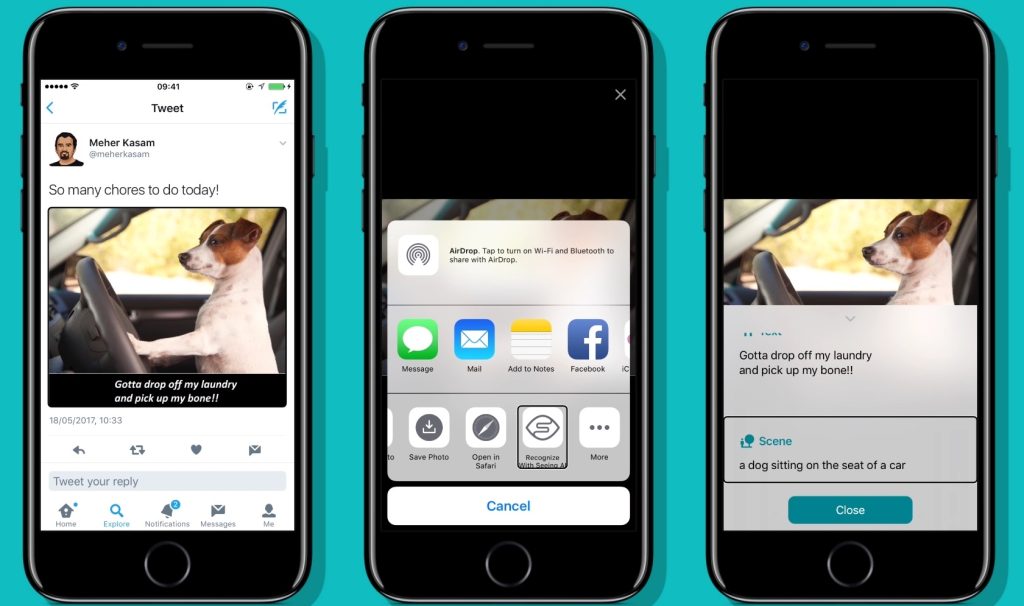Introduction
Microsoft Seeing AI is a free app designed to assist people with visual impairments by turning their camera into an AI-powered narrator. The app recognizes text, faces, objects, and scenes, providing real-time descriptions that enhance the independence of users with blindness or low vision. It transforms the visual world into an audible experience.
Overview of the Seeing AI
Seeing AI is an innovative mobile app designed to assist blind and low-vision individuals in interacting with their surroundings. By using the phone’s camera, the app narrates real-time information about the world, such as reading short text, recognizing faces, identifying products via barcode scanning, and describing scenes. The app offers multiple channels for different tasks, including recognizing currency, describing images, and even interpreting facial expressions. It’s a free iOS app, making it accessible and affordable for anyone with a compatible device. The app’s AI-driven design enhances everyday activities, such as reading documents, identifying objects, and navigating unfamiliar environments, providing a new level of independence for visually impaired users.

Key Features
- Text Recognition:
Seeing AI can read both short snippets of text and full documents, offering users an audio description of what the camera captures. With real-time feedback, users can hold the camera over a document, and the app will provide audio guidance to ensure all text is captured. This feature is invaluable for reading letters, signs, and printed information, giving visually impaired users greater autonomy in everyday tasks. - Facial Recognition:
One of the most human-centered features of Seeing AI is its ability to recognize and describe people’s faces. It can estimate a person’s age, gender, and emotional expression, which helps users engage more fully in social situations. Users can also save faces for future recognition, allowing for seamless interaction with familiar people. This adds a social dimension to the app, allowing users to recognize people and get real-time feedback about their emotional state, enhancing their social interactions. - Object and Scene Recognition:
Using AI, the app can describe everyday objects and scenes, providing an overall understanding of the surroundings. For example, it can identify a coffee cup or describe a scene as “a room with chairs and a table.” This feature is especially useful for orientation and mobility, allowing users to get context about their environment without sight. It makes tasks like navigating public spaces or identifying household items far more accessible.
Evaluating Functionality of the Seeing AI
- Enhancing Functionality with AI :
Seeing AI addresses the core challenges faced by individuals with blindness and low vision by using artificial intelligence to supplement their ability to process visual information. This aligns with the medical model, which focuses on mitigating the functional limitations caused by the impairment. The app reads text, recognizes objects, and describes scenes, allowing users to perform tasks independently that would typically require assistance. By leveraging technology to provide real-time audio feedback, Seeing AI compensates for the user’s visual impairment, enhancing their functionality and autonomy. - Promoting Independence and Social Inclusion:
By providing users with tools to recognize faces, navigate spaces, and identify objects, Seeing AI reduces the need for external assistance, promoting greater independence. This reflects the social model of disability, which views disability not as a limitation but as a result of societal barriers. Seeing AI breaks these barriers by allowing users to participate more fully in social and public life. The app creates a more inclusive environment by enabling individuals to engage with their surroundings independently and confidently, thus reducing their reliance on others. - Accessible Design for All :
Seeing AI is designed with inclusivity in mind, as it is free and available to anyone with an iOS device. This accessibility aligns with the principles of universal design, removing economic barriers to access. By making this advanced technology widely available, Microsoft ensures that visually impaired individuals from diverse backgrounds can benefit, promoting an inclusive and equitable approach to assistive technology.

Conclusion
Microsoft Seeing AI is a groundbreaking assistive technology that empowers blind and low-vision individuals to interact with their surroundings independently. By combining AI and the power of the cloud, the app offers real-time narration of the world around the user, from reading text to recognizing people and objects. It addresses both the functional limitations of visual impairments and the societal barriers to independence, making it an invaluable tool for those with visual challenges.
